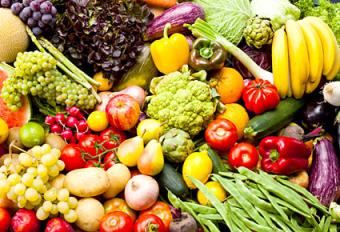
According to the North American Society for Pediatric Gastroenterology, Hepatology, and Nutrition, non-alcoholic fatty liver disease may affect up to 40 percent of adults in the United States. Fatty liver disease occurs when you have too much fat in your liver, which can lead to inflammation, scarring, and liver damage. If you have fatty liver disease, altering your diet and lifestyle may help treat the disease and improve symptoms related to this condition.
Risk Factors
There are several risk factors for fatty liver disease that you can reduce or eliminate by making dietary and lifestyle changes. These include the following:
- Excess alcohol consumption
- High cholesterol
- Obesity
- Diabetes
- Insulin resistance
According to Mayo Clinic, weight loss, blood sugar control, maintaining healthy cholesterol levels, and exercising at least 30 minutes per day can help control fatty liver disease. A review article published in a 2011 edition of the journal Hepatology confirms this theory. According to that article, calorie or carbohydrate restriction leading to weight loss and increased physical activity consistently reduced levels of liver fat, improved blood glucose control, and improved markers of liver disease in people with fatty liver disease.
Key Nutrition Components
If you have fatty liver disease, there are a few things to keep in mind regarding diet:
- Lose weight if you're overweight.
- Control carbohydrates.
- Increase high-fiber foods.
- Replace saturated fats with healthy, unsaturated fats.
- Avoid alcohol.
Weight Loss
If you're overweight or obese, losing weight may help reduce the amount of fat in your liver. Try reducing your energy intake by 500 to 1,000 calories each day to achieve a healthy body weight. This amount of calorie restriction should lead to a weight loss rate of about one to two pounds per week, as recommended by the American Dietetic Association.
Carbohydrate Control
Choose high-fiber carbohydrates with a low glycemic index, or GI, for more favorable effects on blood sugar and weight control. Choose small portions when consuming carbohydrates. Limit or avoid added sugars, white bread, white rice, sugary drinks, and sweets. Reducing your daily carbohydrate consumption may help you reduce your overall calorie intake and lose excess body weight. Carbohydrates are found in foods such as the following:
- Breads, cereals, rice, and pasta
- Fruits
- Starchy vegetables, such as potatoes, peas, and corn
- Legumes
- Milk and yogurt
- Added Sugars
Increase Fiber
Increasing your fiber intake can help control your blood sugar and cholesterol levels, which is beneficial when you have fatty liver disease. High-fiber foods include the following:
- Raw fruits and vegetables
- Whole grains
- Brown rice
- Oatmeal
- Legumes
- Nuts and seeds
Choose Healthy Fats
Choosing healthy fats can help control your cholesterol levels, which may help manage fatty liver disease. Healthy, unsaturated fats include the following:
- Fish oil
- Vegetable oils
- Nuts and seeds
- Avocados
- Olives
Limit or Avoid Solid Fats
Solid fats are fats that are solid at room temperature, and include saturated fats and many trans fats. Consuming too many solid fats can increase your cholesterol levels. Keep an eye on your consumption of these foods:
- Butter
- High-fat meats
- Animal fats
- Cream
- Cheese (choose reduced-fat cheese instead)
- Ice cream
- Shortening
- Stick margarine
Sample 1,400-Calorie Diet Plan
This 1,400-calorie weight loss diet plan may be appropriate for overweight or obese adult men and overweight or obese women who are active or weigh more than 164 pounds, according to the U.S. Department of Health and Human Services. Talk with your doctor or dietitian about your individualized calorie and diet needs.
Breakfast
- One slice of whole-wheat bread
- Two teaspoons of peanut butter
- 1/2 cup of blueberries
Snack
- One cup of low-fat or fat-free cottage cheese
- 1/2 cup of sliced raw pears
- 1/2 ounce of roasted almonds
Lunch
- Two ounces of grilled salmon
- One teaspoon of olive oil
- 1/2 cup of green beans
- 1/2 cup of brown rice
- One small apple
Snack
- Five whole-wheat crackers
- 1.5 ounces of reduced-fat cheese
- 1/2 cup of raw celery sticks
Dinner
- Two ounces of grilled chicken
- One teaspoon of olive oil
- 1/2 cup of cooked carrots
- One small whole-wheat dinner roll
Snack
- Three cups of popcorn
- 1/2 ounce of roasted cashews
- One cup of low-fat yogurt
Bottom Line
Always touch base with your doctor before beginning any type of new diet or exercise program. Your individualized calorie and diet needs depend on your age, height, current weight, activity level, stage of fatty liver disease, and presence of other health conditions such as diabetes or high cholesterol.







